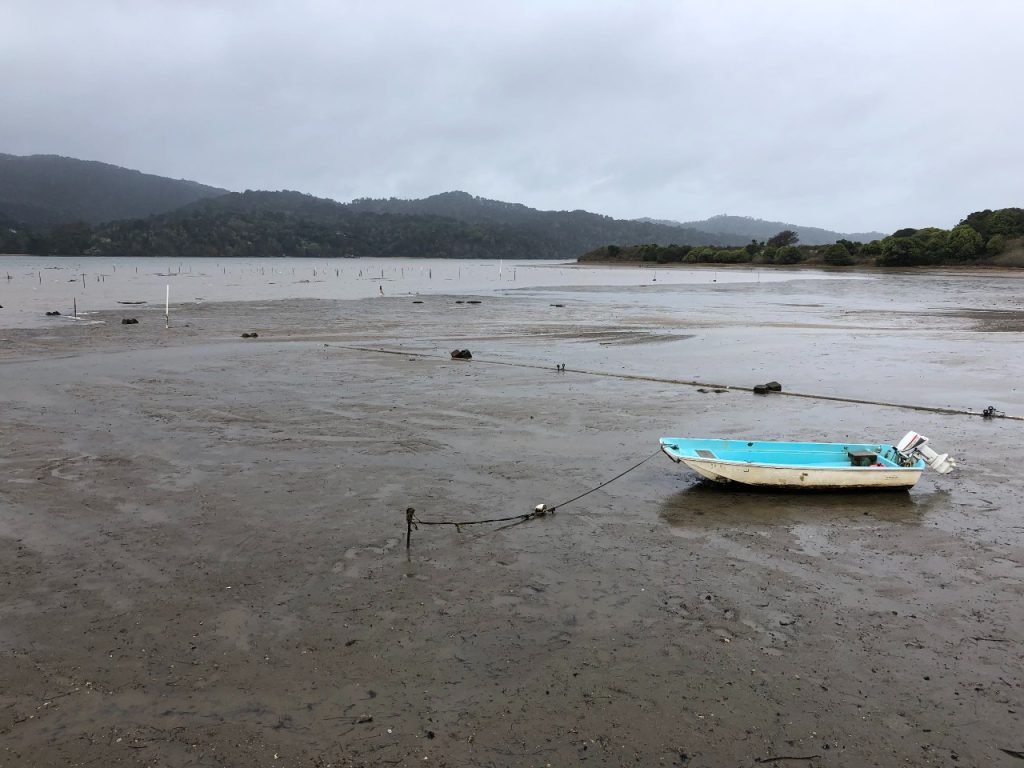
Beneath the waves gently lapping against the shoreline of Tomales Bay lie millions of oysters grown by the four farms that make their home on the scenic Northern California bay. Only a short drive north from the city of San Francisco, Point Reyes and Tomales Bay have supported oyster farms for over one hundred years, but today, the oyster farming industry is struggling.
On January 8th of this year, the National Parks Service announced that they would not be renewing the leases for 12 of the 14 cattle ranches that operate within Point Reyes National Seashore, the same protected area that is home to the oyster farms. This reduction of nearly 17,000 acres of commercial ranching in Point Reyes seems to be sending the message that human land use is incompatible with a healthy ecosystem, a notion echoed hundreds of times in the public comments of the ranching announcement by concerned citizens such as Nick Aguilera, who wrote “I did not travel to Point Reyes to see cows and dairy production. I go for ocean and for the wildlife.” This sense of separation between land use and nature threatens not only cattle ranching, but also oyster farming, even though both practices have been a staple of the Point Reyes area for generations.
The United States is the second largest consumer of seafood in the world and yet, as of 2019, 70 to 80 percent of the seafood consumed in the US is imported according to NOAA. Dr.
Luke Gardner, an aquaculture extension specialist with California Sea Grant argues that we have “a responsibility to grow some of our own seafood and do it in a way that is sustainable to our environment rather than just exporting the seafood problem to another country.” To Gardner, aquaculture, the farming of aquatic organisms in controlled conditions, is the obvious solution.
But in California, the business remains hampered by regulatory redundancies and red tape that threatens to suffocate new farms. “You’ve got employees of the state government on the one hand saying we want to have a vibrant California seafood industry,” says Hog Island Oyster Company director of science, education and policy Gary Fleener. “And then you’ve got people saying we want a minimally developed California coast, there’s a tension there.”
Drakes Bay Oyster Company used to operate within the boundaries of Point Reyes National Seashore where it grew approximately 40 percent of California’s oysters according to a study by San Diego State University. In 2014, the farm was unable to renew its lease with the National Parks Service, leading to closure that same year. An Environmental Impact Statement issued by NPS in 2012 claimed that Drakes Bay Oyster Company could not operate without “long-term unavoidable adverse impacts on eelgrass wetlands, wildlife and wildlife habitats.” Experts say this isn’t true. This statement, which was released to the public and contributed to the closure of the farm, was found by the National Research Council’s scientific review to have a “moderate to high level of uncertainty associated with conclusions concerning levels of impact,” due to their lack of primary data and reliance on inferences drawn from research in other areas.
According to Hog Island’s Fleener, “there’s a pretty good body of science that demonstrates that if you manage those farms well you actually get a net positive impact on the local ecosystem.” Oysters are filter feeders, which means that they actually clean the water around them, reducing turbidity, which improves the bay as a habitat for eelgrass, a native species of aquatic plant. “Many people don’t realize that shellfish farming is one of the most sustainable forms of food production,” says Tomales Bay Oyster Company food safety specialist Martin Seiler. Unlike other forms of aquaculture, he notes, farming oysters requires “no feed, fertilizer, or freshwater inputs.” The process, put simply by Fleener, seems to have few drawbacks: “you’re growing delicious, nutritious animal protein or seaweed and in the process of doing that you’re generating these ecosystem services [like] filtration for clean water, nitrogen uptake, carbon uptake, habitat provision.”
When asked what the main limitations to oyster farming and aquaculture are in the state, California Sea Grant’s Gardner replied with one word: “permitting.” He’s not wrong. A 2020 study done by Virginia Tech on shellfish aquaculture in California, found that regulatory costs amount to 41 percent of total costs for farms in the state on average. These regulations create redundancies and slowdowns in the process of shellfish aquaculture that further hinders the potential of California’s blue economy. According to Fleener, “The playbook of shellfish aquaculture and seaweed aquaculture regulation in the state of California right now is still deeply disconnected from the best contemporary research into how those kinds of food producing systems could be managed in a way that co- produces food system values and ecosystem values.”
Despite the fact that oyster farming presents so many ecological positives, permitting for a new oyster farm follows a similar process to any other coastal development, like a golf course or a condo complex. According to Fleener, who worked at Hog Island Oyster Company when they opened a new farm further north in Humboldt Bay in 2020, the permitting process required to begin building an oyster farm can cost as much as $150,000, before any oysters have been put in the water. These exorbitant entry fees prevent new, smaller scale farms from forming. In the words of Gardner, “Frankly, there’re easier ways to make money than aquaculture.” On top of the initial permitting process, the Virginia Tech study found that average annual regulatory costs for California shellfish farms in 2020 amounted to $473,727 per farm. One respondent from the same study described the complex regulations as “a roadblock to expansion and diversification.”
The benefits of oyster aquaculture seem to make it an integral part of any sustainable food movement. The question becomes, moving forward, will California policy choose to treat aquaculture as a potentially damaging activity that must be rigorously controlled and sanctioned, or recognize it as a practice that could bring huge benefits to the California coast, economy and consumer? Gardner doesn’t see it as a choice, but a responsibility to promote aquaculture in places like Point Reyes, where we can control and promote sustainable practices. “Aquaculture produces more than 50 percent of the world’s seafood now,” Gardner says. “We’re eating it, and if we think we’re too good to farm it, we’re just externalizing any kind of environmental influence.”

